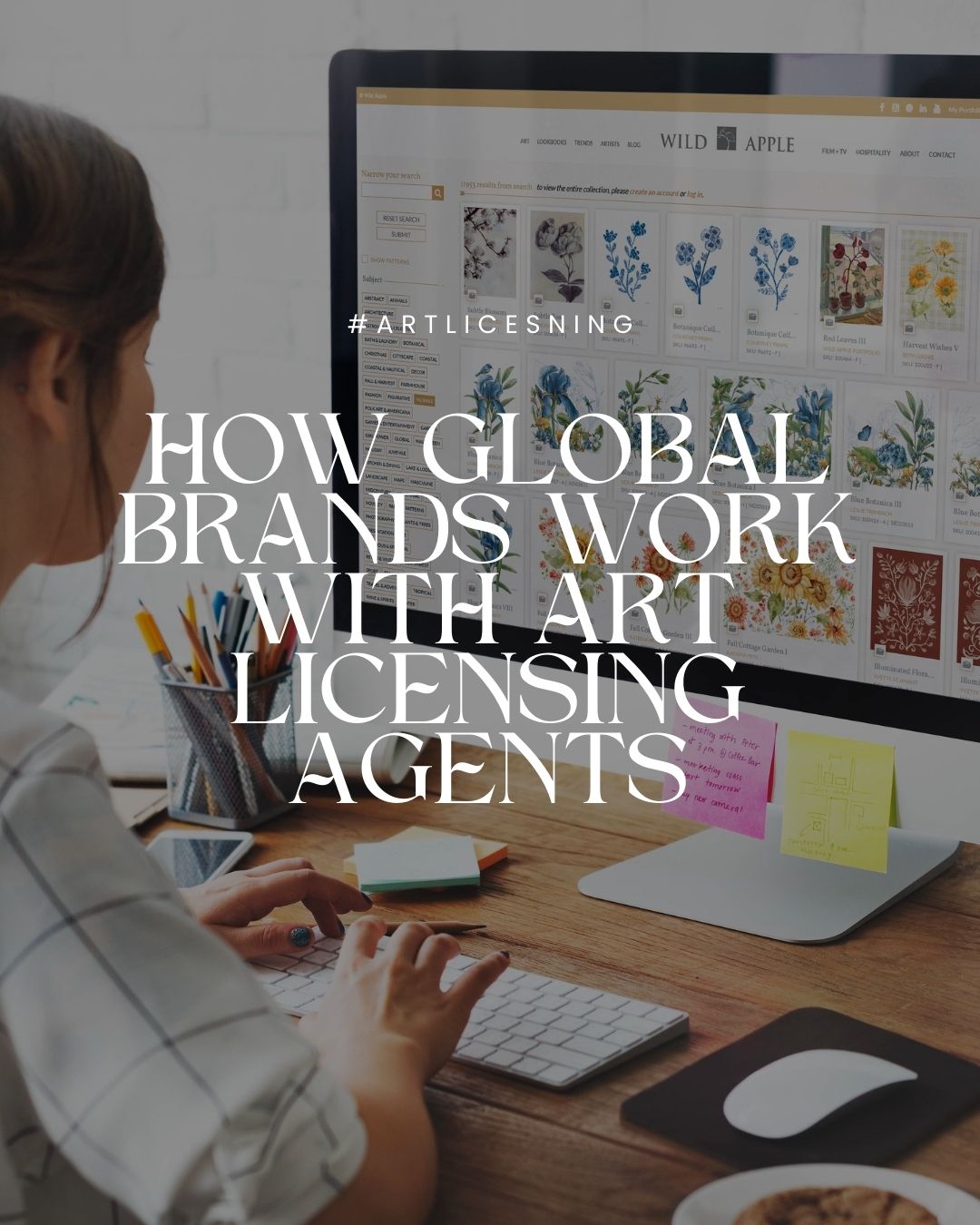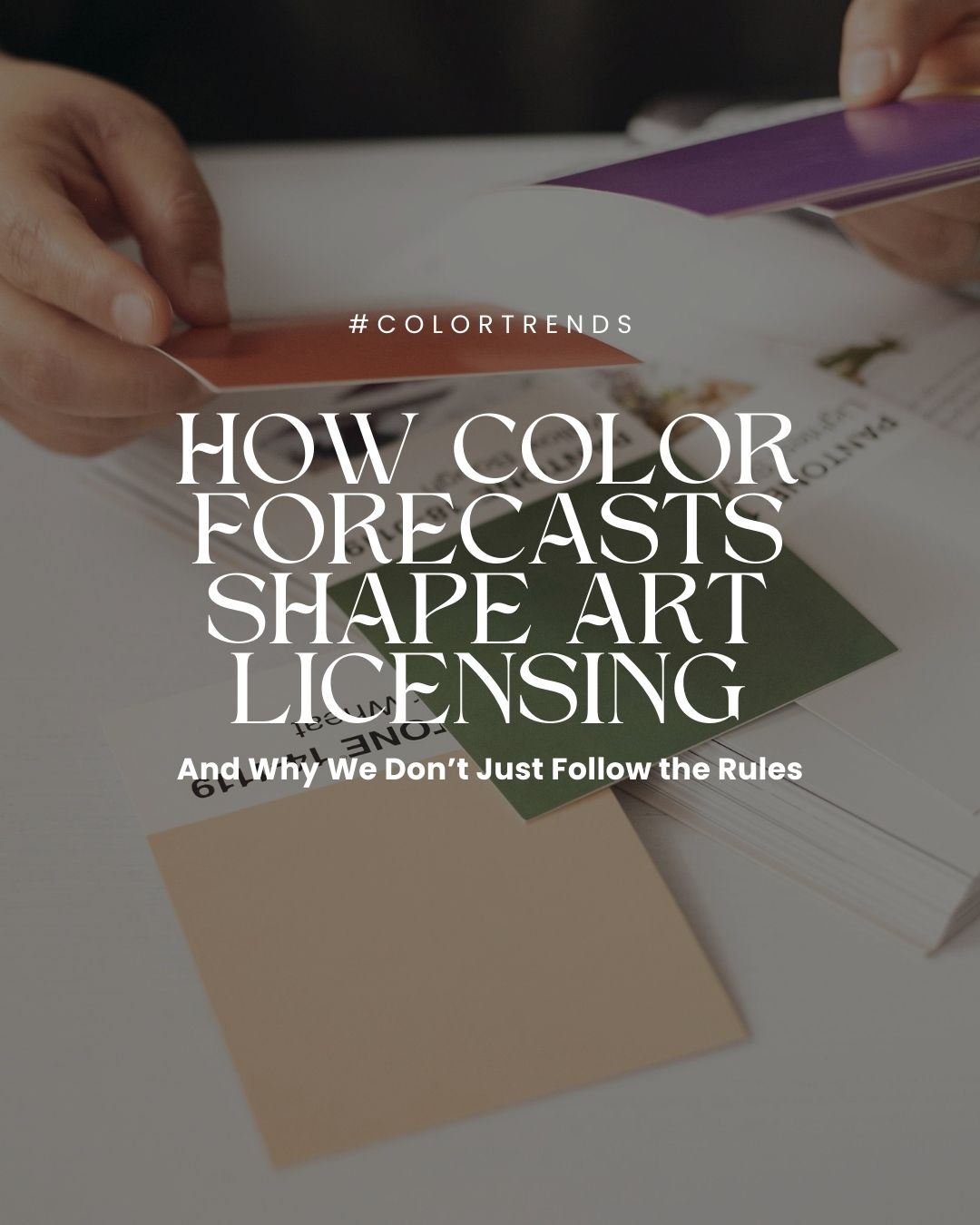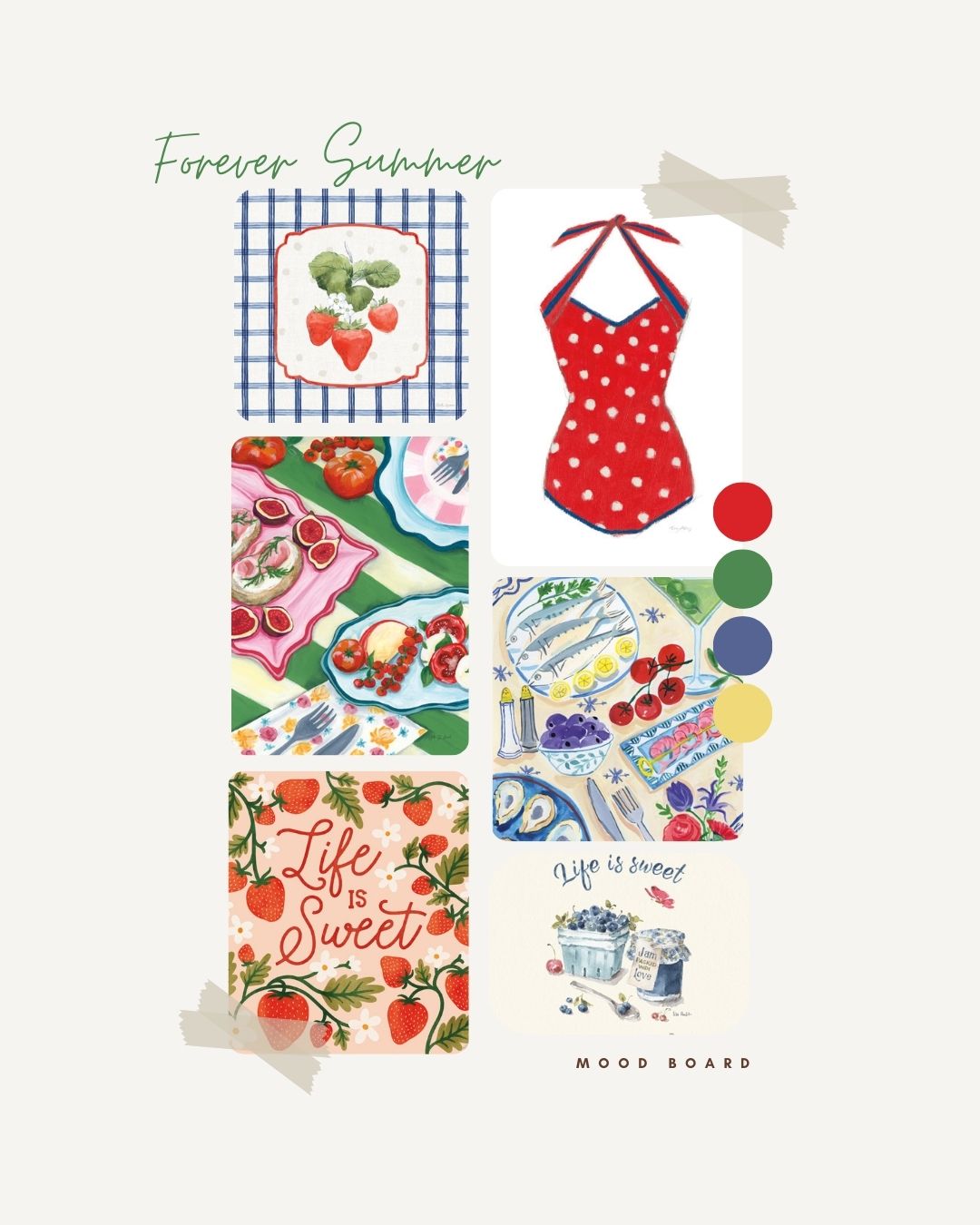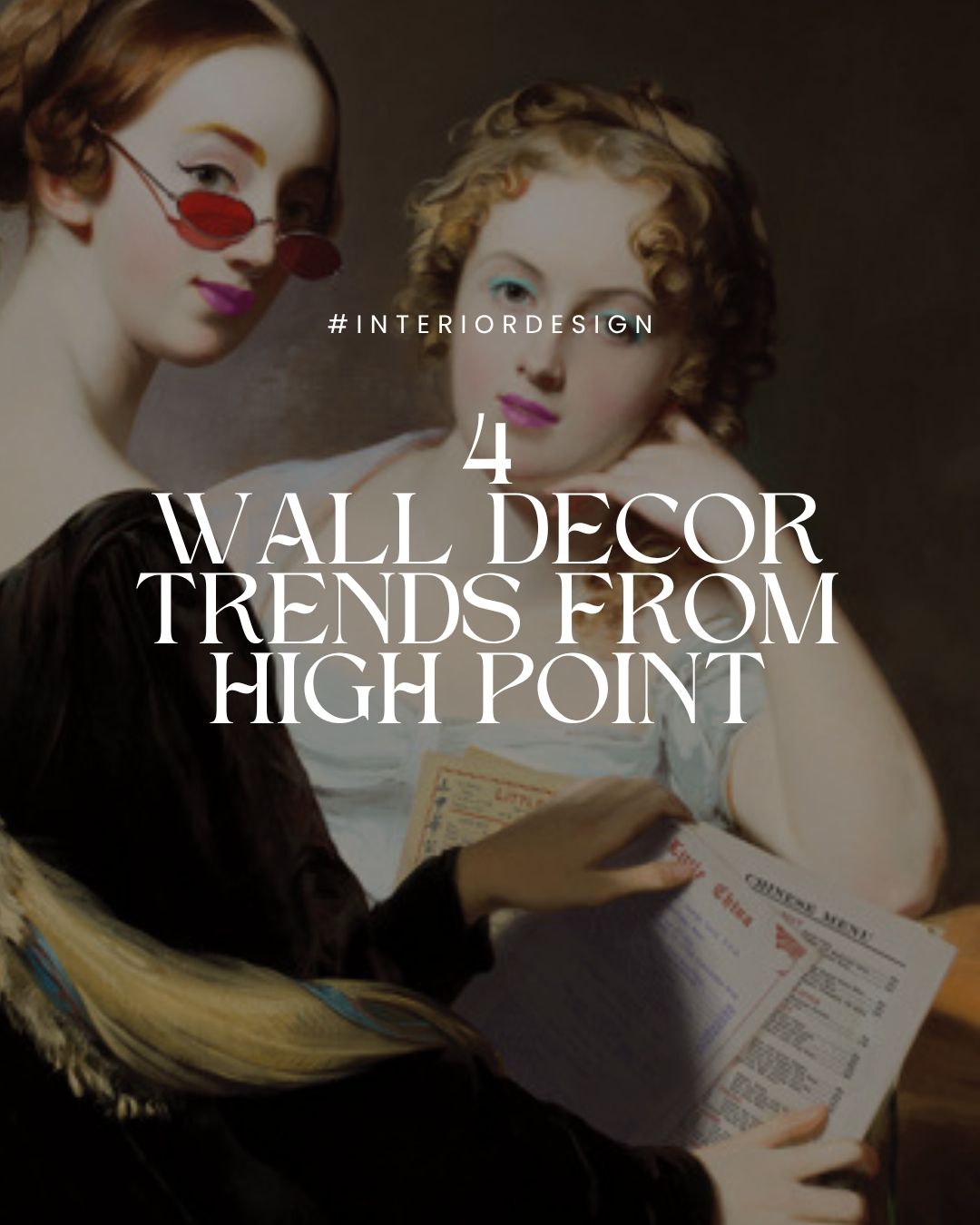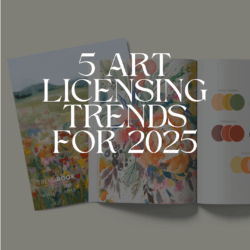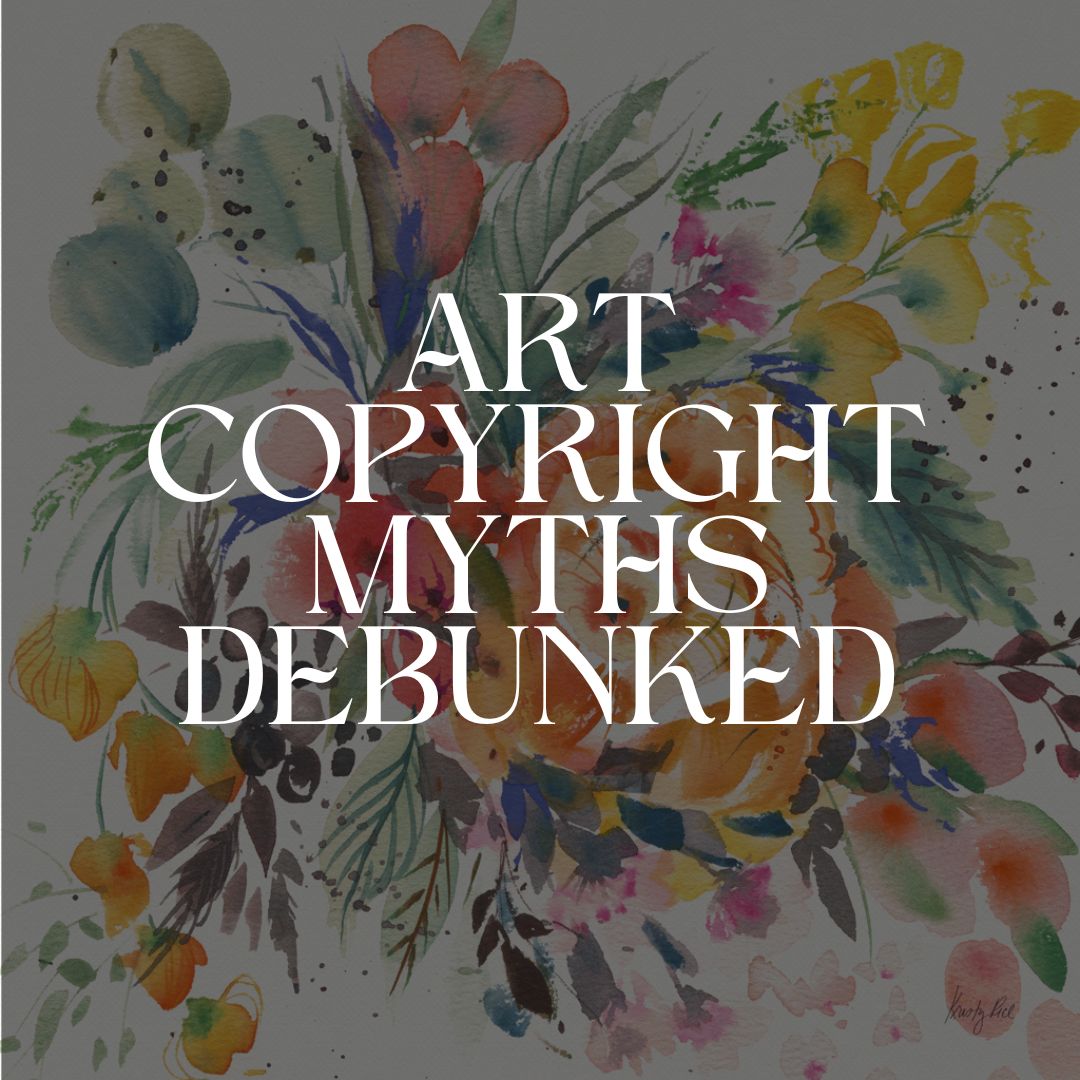
Art licensing copyright laws are fundamental for protecting the creative rights of artists. These laws don’t just protect artists; they shape the landscape in which manufacturers and retailers operate. It’s a framework that ensures artists are rewarded and compensated for their innovation and creativity and that businesses approach artistic content with the seriousness it demands.
Yet, despite copyright’s pivotal role, myths and misconceptions often lead businesses down risky paths, resulting in costly legal blunders that can be easily avoided.
Understanding art copyright law is critical and dispelling myths isn’t just about correcting misinformation — it’s about giving you the correct knowledge to make informed, ethical decisions when manufacturing or buying products that feature art.
So let’s slice through the confusion with actionable insights and knowledge that you can use to fine-tune your business practices, comply with the legal nuances and also honor and fairly compensate the creative minds behind the art.
5 Myths About Art Licensing Copyright
Myth 1: “If it’s online, it’s in the public domain.”
Reality: Just because artwork is accessible online doesn’t mean it is free to use. Most digital content is protected by copyright from the moment of creation, regardless of whether it is explicitly marked with a copyright symbol. Before using art found online, it is crucial for manufacturers to verify copyright status and obtain necessary permissions or licenses.
Myth 2: “Changing the artwork by a certain percentage makes it a new work.”
Reality: No law allows the use of a certain percentage of copyrighted work without infringement. Any modification of existing artwork still requires the permission of the original creator. Copyright infringement can occur no matter how much or how little of the work you use or alter.
Myth 3: “Using artwork for educational or non-profit purposes is always fair use.”
Reality: Fair use is determined on a case-by-case basis, considering factors such as the purpose of use, the nature of the copyrighted work, the amount used, and the effect on the market value of the original work. Retailers and manufacturers should be cautious and seek legal advice when claiming fair use, especially if the use could impact the market for the original work.
Myth 4: “The artist sold the artwork, so the copyright goes to the buyer.”
Reality: Purchasing a physical piece of art does not transfer the copyright to the buyer. The original creator retains the copyright unless they explicitly transfer it in writing. This means the artist holds the rights to reproduction and distribution, while the buyer typically only acquires the physical object.
Myth 5: “If I buy a licensed artwork, I can use it in any way.”
Reality: Licensing agreements are specific about how the artwork can be used, including where, how many times, and in what form. It is important for manufacturers and retailers to understand and adhere to these stipulations. Unauthorized use beyond the scope of the license can result in copyright infringement.
Art Copyright Licensing Best Practices for Manufacturers
Always Verify Copyright and Licensing: Before using any artwork, ensure you have the right to use it. This might involve contacting the artist directly or purchasing a license through an art licensing agency like Wild Apple.
Understand the Licensing Agreement: Be clear about what your license allows and restricts. This includes understanding exclusivity, geographic limitations, and product-specific details.
Keep Good Records: Maintain detailed records of all licenses, permissions and contracts, as well as communications with licensors or copyright holders. This will be invaluable in resolving disputes or proving compliance.
When in Doubt, Seek Legal Advice: Copyright law is complex and varies significantly by jurisdiction. When unsure, consult with a legal expert to avoid potential infringements.
A solid understanding and respect for copyright laws will prevent potential disputes and help cultivate a thriving creative industry where all contributors are fairly compensated and recognized for their work.
Art Licensing Copyright Tips for Retailers
Retailers are the ultimate product gatekeepers, wielding the power to shield their shelves from copyright infringement. Spotting a rogue product is more art than science. Here’s how to sharpen your senses and catch those sneaky infringements before they slip through:
Unusually Low Price: If a product featuring artwork is offered at a price significantly lower than comparable items on the market, this could be a red flag. It might indicate that the product has not incurred the usual costs associated with licensing the artwork.
Quality of the Artwork: Look closely at the quality of the artwork. Unauthorized reproductions often have lower print quality, such as blurred images or colors that don’t quite match the original work. This is often because the infringer does not have access to the original high-resolution files.
Missing or Vague Attribution: Legitimate products usually have clear attribution to the artist and might include information about the licensing entity or copyright holder. If this information is missing or intentionally vague, it could be a sign of copyright infringement.
Check the Packaging: Officially licensed products often have specific packaging that includes copyright information, licensing details, and sometimes a hologram or other security features to prove authenticity. The lack of these elements might indicate a problem.
Suspicious Seller Information: If the product is coming from a seller with a poor or nonexistent track record, or from a geographic location known for producing counterfeit goods, additional scrutiny could be warranted.
By weaving these strategies into your buying process, you become a crusader for copyright respect and safeguard your store’s reputation.
For Wild Apple, Copyright Protection is Not Just a Legal Requirement—It’s a Core Value.
At Wild Apple, we uphold the copyright of all artists we work with. This dedication is highlighted by our role as founding members of the Art Copyright Coalition, a key initiative aimed at protecting the intellectual property rights of artists throughout the home decor industry. Our commitment to copyright protection ensures that every artwork we manage is treated with integrity and respect.
If you have any copyright questions or about licensing art, Wild Apple can help. Reach out to us to find out how we can help you pick, manage and use art in your products responsibly and lawfully.

